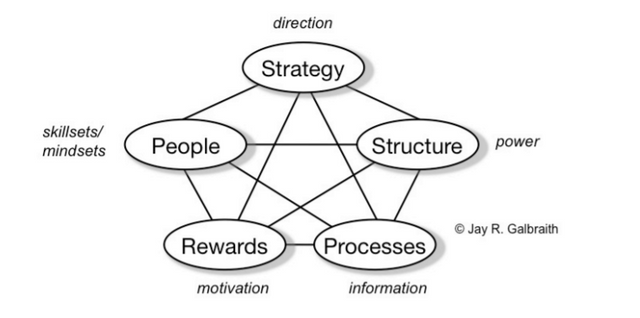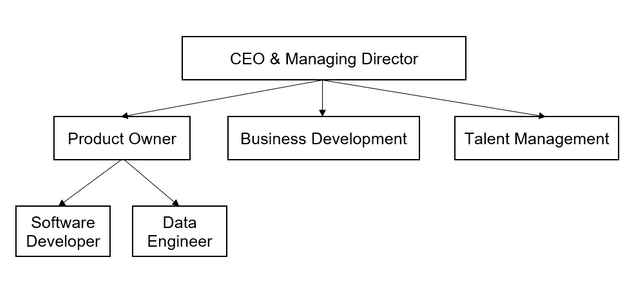Objective of the plan
The objective of the plan is to create a blockchain based platform where people can resell their travel-tickets to other travelers for a much cheaper price than the current one, even in the last minute. But the organizational effort for the travel-companies to rename tickets is not easy, especially in the airline business, where safety is one of the most important topics. Therefore the use of blockchain technology, could check the identities of the buyers and sellers and proof the safety of the transactions with smart contracts.
The Company
TikChain is a platform which has a value proposition of bringing its two types of its customers – planned travelers and last-minute travelers – together by partnering with travel companies. Planned travelers are the ones who planned their travel in advance but because of some reasons they decided that they cannot go on a vacation. That is why they want to receive money back but the problem is that their tickets are non-refundable. Last minute travelers are bargain hunters who travel spontaneously due to their limited budget. They are faced with the issue that tickets are often expensive at the last minute. At the same time, travel companies lose profit for every blank seat. This is where Blockchain technology, via the use of smart contracts, enables a new type of business. TikChain‘s vision is “to connect people around the world, even in the last minute and to provide them a memorable experience for a cheap price ”.
Planned travelers will put their purchased tickets into the platform and get most of their money back without dealing with customer services of the travel companies. Last-minute travelers can buy cheaper tickets compared to travel websites at the last minute by paying dynamic ticket prices. Travel companies update the booking information and TikChain in turn will pay a fee to them and advertise for those companies.
The algorithm behind dynamic pricing takes into account the original ticket price and its new price. The situation where the new price is smaller than the original price is not targeted by the company. The planned traveler will receive between 50%-90% of the original price back, depending on the outcome of the dynamic pricing algorithm. The remaining margin will be shared between the travel companies (60%) and TikChain (40%). By this way, the revenue stream will consist of 40% of the dynamic pricing model whereas the expenses will consist of the blockchain technology platform, data management, legal fees, marketing and payroll of employees.
Market analysis
The modern online travel industry is developing very rapidly. The total market for bus, train and airplane travel in 2018 is estimated to amount to 1058.5 million passengers and it continues to grow at an average annual rate of 2.3%. The crucial fact is that 80% of all travellers prefer to search for tickets online, and 70% of them usually travel for leisure. That is exactly the segment of the total travel market which can be addressed by the TikChain platform, and the number of 740.95 million users per year demonstrates the huge potential for its implementation.
As the main users of the platform are last-minute leisure travellers on the one hand and people who want to resell their tickets on the other hand, the analysis was conducted in order to understand which part of the total addressable market can be serviceable. The results showed that around 50% of people book their tickets ‚last minute’ – just a few days before they plan to travel. However, according to the survey, which was made among potential users of the platform and included 154 respondents, only around 1% of travellers had to cancel their trips in the last year. Hence the size of the serviceable addressable market is limited to around 7.5 million users. Although this is much less than the number of people who want to buy tickets, the number of potential users shows that the supply of travel tickets on the platform will still be sufficient for increasing sales and profit.
Based on potential penetration rates predictions about the number of end users of the platform during the next 5 years were made. The number of 33472 users in the 1st year will increase to 740950 users in the 5th year. Such results are expected to be achieved with the help of marketing activities which will raise people's awareness of the platform.
Moreover, a competitor‘s analysis was made to understand TikChain‘s market potential and further development. Main direct competitors are Transfer Travel, Sparefare and Take My Flight. All three of them are marketplaces for reselling tickets. However, tickets from transport companies, which do not allow to change names of travellers, can not be sold on their platforms, and resellers need to connect to these companies by themselves. In contrast, TikChain provides its users an opportunity to resell all tickets they want without worrying about coordination with 3rd parties. TikChain makes everything easy and comfortable.
Marketing and sales activities
TikChain‘s marketing strategy is directed towards two main target segments: planned travelers who‘s trips got cancelled and people who are looking for a last minute cheap tickets. Primarily, TikChain is realized through a mobile app for which there is a working prototype. There will be a TikChain website as well, depending on the preferences of our customers. Mainly social media Marketing will be used. Online presence will be built through social media platforms like Facebook, Instagram, LinkedIn etc. where users can also share experience and leave reviews which would be a great input for further improvement and development of Tickchain. Guerilla marketing is also something that is considered to be implemented within the marketing strategy.
Branding is a form of marketing that serves as the basis for future advertising. It helps to make our product both attractive and well-known. Branding includes making our name, slogan and logo distinctive and recognizable.
As TickChain grows further forms of marketing will be employed such as public relationships. PR is a form of marketing that would work side-by-side with ad campaigns and promotions.
In terms of sales activities close relations will be maintained with users: support during the sale and aftersale with follow up emails will be offered. In the future, CRM Software will be used to have a better overview of sales activities and tracking projects. Since sales is a team activity, this will also encourage closer collaboration between our employees and more coordinated effort.
Financial data
The revenue stream of TikChain was calculated to amount to 251K €, 586K €, 1.4M €, 3.3M € and 5.5M € for the upcoming 5 years. It is based on multiplying the Serviceable Obtainable Market (33472 users) with the dynamic pricing model. Costs are also calculated for the following 5 years based on onboarding costs, cloud costs, ongoing maintenance costs, monitoring costs, salaries, rent, marketing and advertising.
According to the difference between revenue and cost, profit/loss is expected to amount to -366K €, -81K €, 710K €, 2.4M € and 4.4M € for the next 5 years. As the initial investment for the blockchain technology is high for the first year, it will be a loss for the first year and the break-even point at which revenues will compensate the costs will be between the second and the third year.
Organization and Personnel
At TikChain, the organization is fast and agile with clear roles and responsibilities. The company strives to optimize effectiveness and efficiency. To achieve this, TikChain follows a 5 star model on the basis of J. Galbraith’s Star Model.
Building blocks of the 5 star model:
The model consists of 5 major elements of an organization namely – Strategy, Structure, Process, People and Rewards.

Strategy: The formula for winning is our vision statement – connecting people around the world even in the last minute and to provide them a memorable experience for a cheap price. Nobody has to be at a loss.
The field in which TikChain will be active is the travel industry. The competitive advantage is achieved by providing a platform to sell non-refundable tickets and to provide options to change the traveler’s name on the ticket. The company would be staged as Early Adopters.
Structure: The structure of the company has a very flat hierarchy. For starting, there will be less than 10 employees, each representing a department. Roles and responsibilities are well defined beforehand, however they are flexible and can be changed frequently.
Process: Various decision making processes will be implemented at TikChain including performance management, budgeting and allocation of resource capital, research and development.
People: Most of the employees are currently based out of Munich TikChain is open to hiring more people. The employees are expected to work in cross-functional teams and are required to cooperate with each other. According to the human resource policies, the workforce structure consists of diversity in terms of gender, demography and culture. Utmost care is also taken in attracting, retaining and developing talents.

Rewards: Incentives, celebration of achievements, metrics/KPI, promotion
R&D for product/service
There are three main areas where investments in R&D should be done. The first one is the exploration of Tickchain customers' exact needs. In order to be able to understand what the customers really want, investments in market research should be done through interviewing people and receiving as much feedback as possible.
Besides that, it is extremely important to optimize the prices of the tickets not only to attract and retain customers, but also to obtain all the profit we can. To achieve this and to improve our dynamic pricing algorithm, investments in data analysis and machine learning services are needed.
Last but not least, it is also planned to expand Tickchain in the near future to all kinds of tickets, not being restricted to travel tickets. In order to do that, a budget for developing all these new areas is needed.